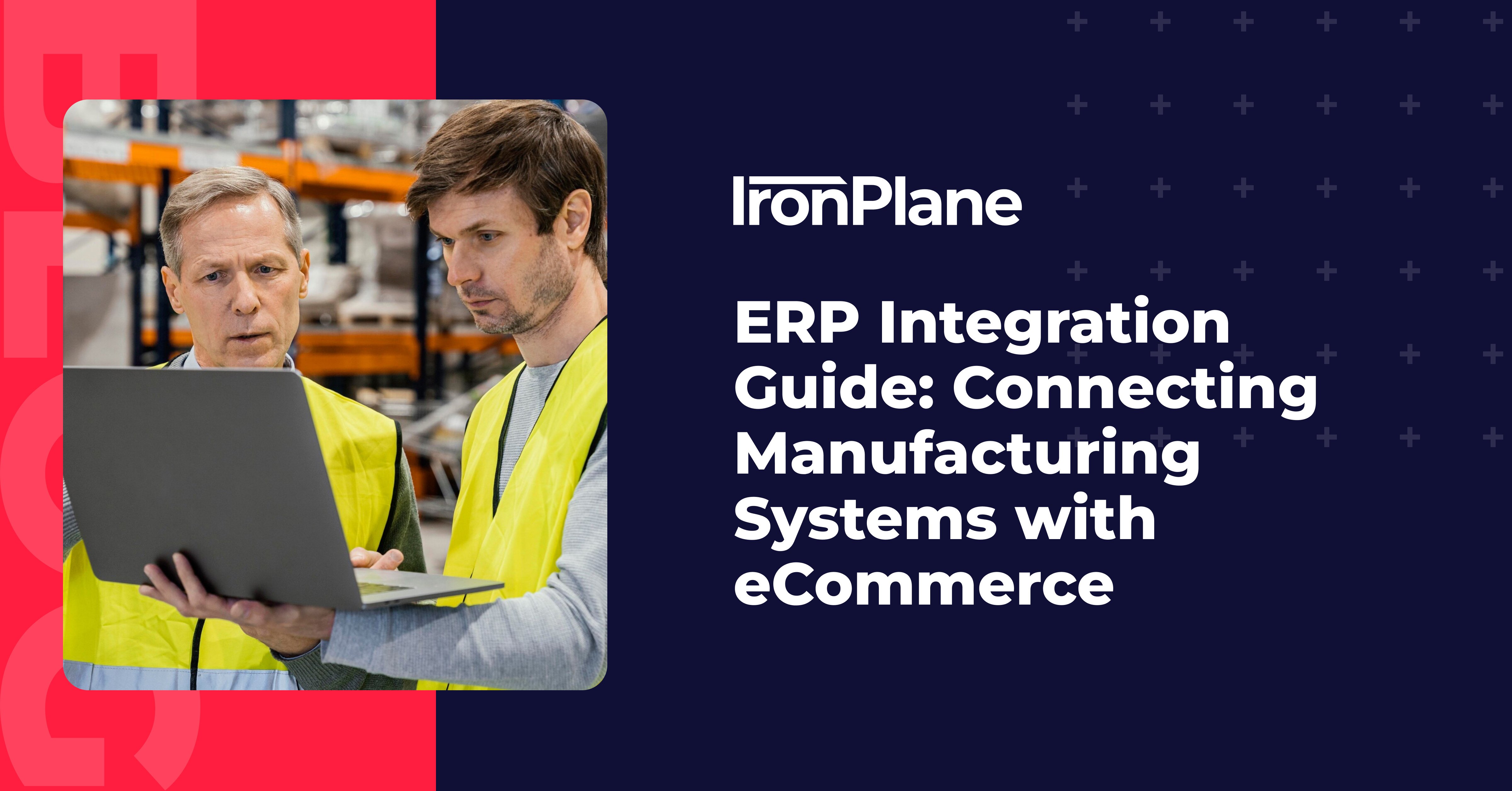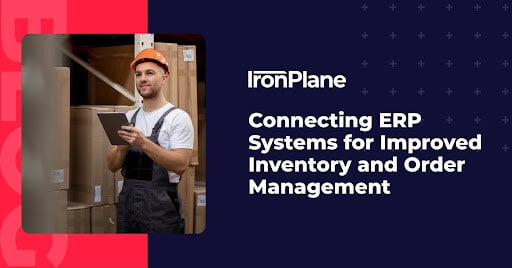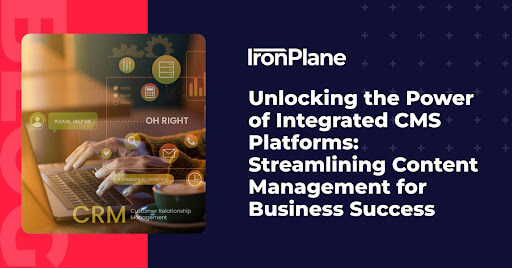The Starter’s Guide to B2B eCommerce for Manufacturers
This guide provides a high-level overview of B2B eCommerce for manufacturers, what it entails, why it's important, and how to get started with it.
4 min read
 Jeff Zoldy
:
February 18, 2025
Jeff Zoldy
:
February 18, 2025

Manufacturers need to connect their Enterprise Resource Planning (ERP) systems with eCommerce platforms to stay competitive and efficient. This integration can make operations smoother, improve efficiency, increase sales, and create a better experience for both the manufacturer and their customers. Let's explore how manufacturers can successfully connect their ERP systems with eCommerce platforms and look at the benefits and challenges of this process.
ERP systems are really important for many manufacturing operations. They help manage everything from inventory and production to finances and human resources, giving a complete view of the entire operation. ERP systems improve inventory and order management, which helps manufacturers keep the right amount of stock, reduce waste, and meet customer needs efficiently.
Key features of manufacturing ERP systems include:
eCommerce has become a very important sales channel for manufacturers, changing how they interact with customers and do business. It allows them to reach customers directly, expand their market, and create new ways to make money. Integrating eCommerce platforms with existing systems can help manufacturers stay competitive by providing a smooth online shopping experience for their customers, whether they sell to businesses or consumers.
To successfully connect ERP and eCommerce systems, manufacturers need to focus on several key areas:
Integrating ERP with eCommerce requires careful planning and execution. Here are the main steps to follow:
Evaluate existing ERP and eCommerce platforms, identify integration requirements, and set clear objectives
Select appropriate integration methods (API, middleware, custom development) based on system compatibility and business needs
Develop the integration solution, conduct thorough testing, and deploy in phases to ensure smooth operation
It's important to work with experienced partners during this process. Magento integration experts can help ensure a smooth connection between your systems, providing valuable insights and technical expertise throughout the integration journey.
To get the most benefits from your integration and ensure long-term success, follow these best practices:
These practices will help you manage your product catalog effectively across both ERP and eCommerce platforms, ensuring a smooth experience for both your team and your customers.
Integrating ERP with eCommerce can come with some challenges. Here are some common issues and how to solve them:
| Challenge | Solution | Difficulty |
|---|---|---|
| Data inconsistencies | Implement regular data audits and automated data validation processes | Medium |
| Performance issues | Optimize system configurations, use caching mechanisms, and implement efficient data transfer methods | High |
| Customization complexities | Utilize flexible integration tools and APIs, and consider middleware solutions for complex integrations | Medium |
| User adoption | Develop comprehensive training programs and provide ongoing support to ensure smooth user adoption | Low |
| System compatibility issues | Conduct thorough system analysis and choose integration methods that align with existing infrastructure | Medium |
The future of ERP and eCommerce integration looks exciting, with new technologies promising to improve connectivity and efficiency. Some trends to watch out for include:
These trends will help manufacturers streamline their B2B operations even further, creating more efficient and responsive business models.
Integrating ERP systems with eCommerce platforms is a big deal for manufacturers in the digital age. It combines efficient production management with the reach and flexibility of online sales. By following this guide and working with experienced partners, manufacturers can successfully connect their systems and enjoy the benefits of improved efficiency, accuracy, and customer satisfaction.
Remember, the key to successful integration is careful planning, choosing the right tools, and ongoing improvement. With the right approach, manufacturers can set themselves up for success in the changing world of manufacturing and eCommerce. By using these integrated solutions, businesses can meet current market demands and be ready for future challenges and opportunities in the digital marketplace.

This guide provides a high-level overview of B2B eCommerce for manufacturers, what it entails, why it's important, and how to get started with it.

Enterprise Resource Planning (ERP) systems are vital for businesses looking to streamline their operations, enhance efficiency, and improve overall performance.

In today's digital landscape, efficient content management is a cornerstone of business success. By integrating Content Management Systems (CMS) platforms, organizations can streamline their content management processes, enhance operational efficiency, and deliver seamless experiences across multiple channels.